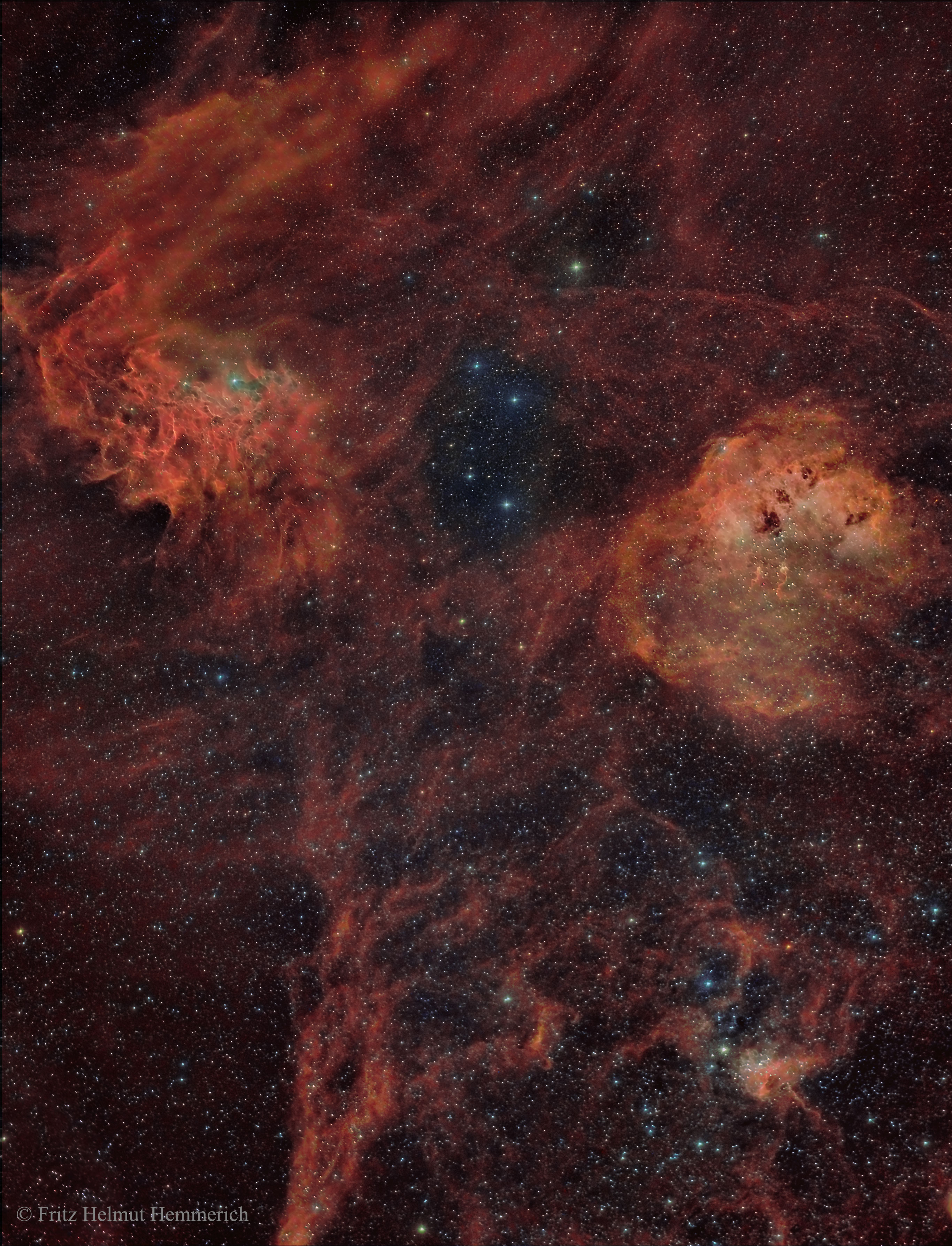
Copyright:
Fritz Helmut Hemmerich
原文:
Rich in star clusters and nebulae, the ancient constellation of the Charioteer (Auriga) rides high in northern winter night skies. Composed from narrow and broadband filter data and spanning nearly 8 Full Moons (4 degrees) on the sky, this deep telescopic view shows off some of Auriga’s celestial bounty. The field includes emission region IC 405 (top left) about 1,500 light-years distant. Also known as the Flaming Star Nebula, its red, convoluted clouds of glowing hydrogen gas are energized by hot O-type star AE Aurigae. IC 410 (top right) is significantly more distant, some 12,000 light-years away. The star forming region is famous for its embedded young star cluster, NGC 1893, and tadpole-shaped clouds of dust and gas. IC 417 and NGC 1931 at the lower right, the Spider and the Fly, are also young star clusters embedded in natal clouds that lie far beyond IC 405. Star cluster NGC 1907 is near the bottom edge of the frame, just right of center. The crowded field of view looks along the plane of our Milky Way galaxy, near the direction of the galactic anticenter. Astrophysicists: Browse 1,100+ codes in the Astrophysics Source Code Library
中文翻譯:
🪐 豐富的星團與星雲,古老的星座「戰車座」(Auriga) 在北半球冬季的星空中高高騰起。這幅延伸近8個滿月(4度)的深空望遠鏡影像,展現了戰車座的星際瑰寶。畫面中包含發射區域 IC 405(左上方),距離地球約1,500光年。這裡也被稱為「火焰星雲」,其紅色、盤旋的氫氣雲團受到高溫O型恆星AE Aurigae的能量驅動。
右上方的IC 410則遠得多,位於約12,000光年外。這個星形成區域以其嵌入的年輕星團NGC 1893和鰻魚形狀的塵埃與氣體雲著稱。右下方的IC 417和NGC 1931,分別被稱為「蜘蛛」和「蒼蠅」,也是嵌於誕生雲中的年輕星團,位於遙遠的IC 405之外。畫面底邊附近靠右的星團NGC 1907,正好位於畫面的中央略右側。這片擁擠的視野展現了我們銀河系的平面,並朝向銀河反中心的方向。
#戰車座 #Auriga #火焰星雲 #IC405 #星團 #宇宙 #星空 #銀河 #深空 #天文探索 #天文學 #Astrophysics #深空攝影 ✨🌌🔭
來源:NASA每日圖片


